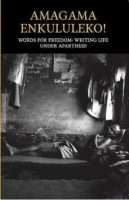Richard Rive was born in 1931 in District Six. He studied as a teacher, and also wrote for magazines like Drum and Fighting Talk. In the 1960s and 1970s he went on to study in the USA and England, and became an internationally recognised writer and professor. He was murdered in his home in Cape Town in 1989.
District Six was a part of Cape Town. It was home to a mixed population, mostly people the Apartheid government called ‘Coloured’. This included Muslims and Christians who were descendants of Malay slaves, Khoi, Africans and white settlers. There were also some Indians and newer white immigrants, like Jews and Italians. Most Black Africans had already been forcibly removed further away from Cape Town. Most residents were working class and the area was poor. In 1966 it was declared a white Group Area and in 1968 demolitions began, with about 60 000 people removed to the Cape Flats.
The following extract comes from Rive’s novel ‘Buckingham Palace’, District Six. In it he uses his own memories of growing up there as a springboard to write a fictional story. The story does romanticise some parts of life in District Six, making it seem happier or easier than it was. This is partly because it is written from memories of childhood, and partly because of what came afterwards: the much harder life that awaited people on the Cape Flats. Nonetheless, while life in District Six was difficult in many ways, it allowed for freedom that was not possible later, and was home to a tightly knit, strong community which was ripped apart by forced removals.


